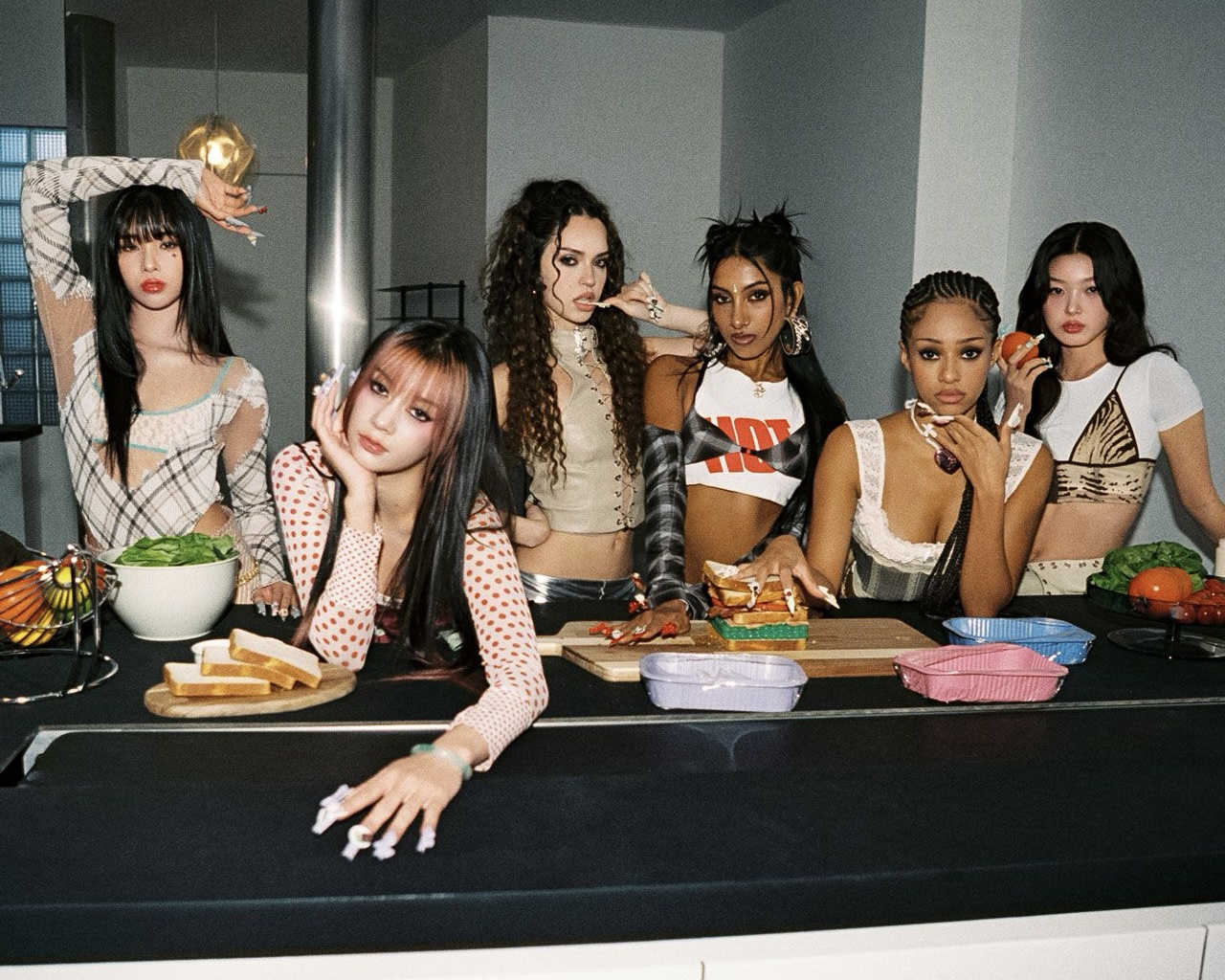When Katseye dropped “Gnarly,” the reaction was immediate and polarizing. For a group known for their slick sound and clean-cut image, the sudden switch to a chaotic, high-energy track with bold visuals left many fans confused. The lyrics felt overly repetitive to some, and the shift in vibe was dramatic. Comments poured in calling the track “underwhelming,” “random,” or simply “not it.” And after returning from a long release hiatus, this wasn’t the comeback many fans expected.
But just weeks later, “Gnarly” is a viral sensation on socials. Katseye now holds the title for the most monthly Spotify listeners among all HYBE girl groups, beating out heavyweights like NewJeans. So what happened? How did a song that faced mixed reactions at launch become one of 2025’s most viral hits?
To understand the turnaround, you have to look at how the song was rolled out. When “Gnarly” was first teased, there was excitement as it marked Katseye’s return after a significant break. But the track’s official release sparked confusion. Fans who had waited months for new music were met with a sound and lyrical style that felt like a total departure. For international fans, especially, the English lyrics and their surface-level simplicity felt jarring. The song didn’t seem to carry the emotional depth or narrative fans had come to expect.
Then came the live performance, and everything changed.
Once their live performance video dropped of their performance on Mnet’s ‘M Countdown,’ the conversation shifted almost overnight. Clips of Katseye’s fierce stage presence, crisp choreography, and aesthetic visuals went viral. The song clicked in a new way. Fans who had written it off found themselves watching the performance on repeat.
This isn’t an uncommon dynamic in K-pop, where performance is as crucial as the song itself. But Katseye isn’t quite a traditional K-pop group. Formed through a global survival show and made up of international members, they exist at the intersection of global pop and K-pop, drawing from both worlds but not fully fitting into either. That makes audience expectations tricky.
Interestingly, Korean fans responded to “Gnarly” much more positively from the start. Many loved the catchy hook and embraced the song’s fun, carefree energy. Within days of the live performance, fans in Korea had already created an unofficial fan chant, shouting along to the lyrics in support of the group, even before a chant guide was released. The enthusiasm was organic and immediate, showing a different relationship with the song compared to international listeners.

That difference may lie in how lyrics are consumed. For K-pop fans listening to music in a language they don’t speak, the overall vibe, rhythm, and energy often matter more than lyrical meaning. “Gnarly” checks all those boxes: it’s fun, repetitive in a way that’s easy to chant, and powered by a magnetic performance. But because it’s in English, international fans couldn’t help but focus more on the lyrics and were quicker to critique what they felt was a lack of substance. The irony, of course, is that many beloved K-pop songs have equally simple or “nonsensical” lyrics when translated, but fans give them more grace when they don’t fully understand the words.
“Gnarly” may not be deep. It may not be emotional. But it’s a bold, experimental pop track with just enough chaos to get people talking, and enough charisma to win them over.
So maybe “Gnarly” was never about pleasing everyone on the first listen. It was about making a statement, about sound, about identity, and about how pop music is evolving beyond borders. Katseye took a risk, and in the process, sparked a bigger conversation about how we consume music and what we expect from our favorite artists. In the end, “Gnarly” did what every good pop moment should: it challenged expectations, started debates, and, most importantly, got stuck in our heads.
I am a creative based in Houston, Texas. I am a University of Houston Alumni working as a Marketing and Communications Specialist for a local agency. I enjoy discovering new music, regardless of genre, as music is the universal language. In my free time, I enjoy thrifting and discovering new stories waiting to be explored.



